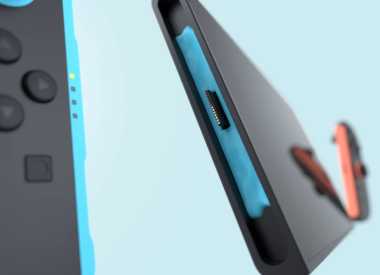#VisibleWomen. You saw it all over Twitter yesterday, filling your feed with gorgeous art from women and non-binary creators in comics. But who is behind the hashtag? That would be Kelly Sue DeConnick, known for her work on Captain Marvel, Bitch Planet and much more. She has been running #VisibleWomen multiple times a year since March 2016. DeConnick started the hashtag as a way to connect artists to employers.
“The first time I did it, it was on a Sunday and it was a spur of the moment thing. I had been asked a few times by folks in the industry if I could recommend some women artists because they didn’t know very many or how to find them,” DeConnick told Player.One. “I both appreciated the asking and also was like, “You guys there are so many. Are you even looking at all?’ So I wanted to boost the visibility of women artists in our industry.”
#VisibleWomen will lead you to gorgeous art from women and non-binary comic artists. https://t.co/hIFkwC7Ind
— Twitter Moments (@TwitterMoments) August 7, 2017
The name of the hashtag is a play on Invisible Woman, the first Marvel superhero who was a woman. Sue Storm (previously known as Invisible Girl) first appeared in The Fantastic Four #1 in 1961.
“Her power was invisibility, which is kind of hysterical,” DeConnick said, pointing out the irony. “The idea [for the hashtag] was like, ‘Oh this is Visible Women.’”
Though she conceived the name, DeConnick emphasized right off the bat #VisbileWomen is not a lone effort. She gives a special shoutout to her team, especially Turner Lobey, who compiled all the information from incoming tweets into a spreadsheet. She also stresses she’s not the first to do this and points to Mari Naomi, who has maintained two databases for queer cartoonists and cartoonists of color for quite some time.
“I’m not the first person who has tried to put together databases for marginalized creators or signal boost. Naomi has maintained those two lists for quite some time. In this moment of spotlight for #VisibleWomen, if we could share some of that, that would be cool,” she said.
This year got the biggest response because Twitter Moments helped boost the hashtag’s exposure. It was also the first time submissions were open to colorists, letterers, inkers and writers as well as artists. While the visibility is great, DeConnick is most pleased when her efforts result in women getting hired.
“It doesn’t really mean that much to me as an exercise, but if it leads to folks getting hired I think that's tremendous,” she said. “Women are discouraged from advocating for themselves, often don’t know how to do it, or are very uncomfortable doing it and are sometimes punished for doing it. A man puts himself forward for a job and that’s great and he’s ambitious. A woman does and she’s kind of uppity.”
After her team compiles the data into a spreadsheet, she offers the document to any hiring professional who wants it. Yesterday, there were more requests than ever before, eight (as of Monday at 8 p.m. EDT), which will be sent out on Wednesday.
“There aren’t that many publishers in comics,” said DeConnick, stressing eight is no small number. “That’s eight hiring professionals. We’ve hired from the list ourselves.”
DeConnick believes we are facing age old problems that aren’t unique to the comics industry. However, the quick turnaround of an issue out every 30 days is one factor that makes it even harder for women to break into the industry.
“There’s not a lot of time to take chances, so people hire the same people they've always hired. It’s difficult to develop new talent and when they are developing new talent, I think you’re hiring this white guy and he recommends this white guy he went to school with and the guy does great work. Great. Fantastic, and this guy vouches for him. It happens,” she said. “I mean there is certainly sexism and racism and all kinds of other ugly isms that are both overt and culturally ingrained that play into it, but I think there are very few really mustache twirling, ‘Let’s keep the girls out.’ I think it’s more just habit and who people know.”
She also believes there are also some ideas about what men think women’s art looks like, a stereotype that affects employment.
“Our art isn’t any more characterized by any one thing than anybody else's is and if you look at the breadths of styles in the Visible Women spreadsheet you will see women who do horror and women who do delightful, light romantic manga and everything in between,” she said. “Just like anything else, our culture has preconceived notions about what women can be and women can do and it’s just very limiting.”
For more on the #VisibleWomen campaign, check out DeConnick’s website and follow her on Twitter. Also, be sure to support Cartoonists of Color and Queer Cartoonists run by Mari Naomi.


















